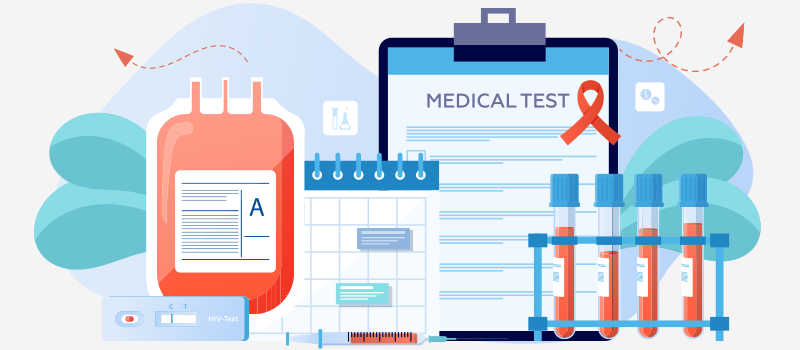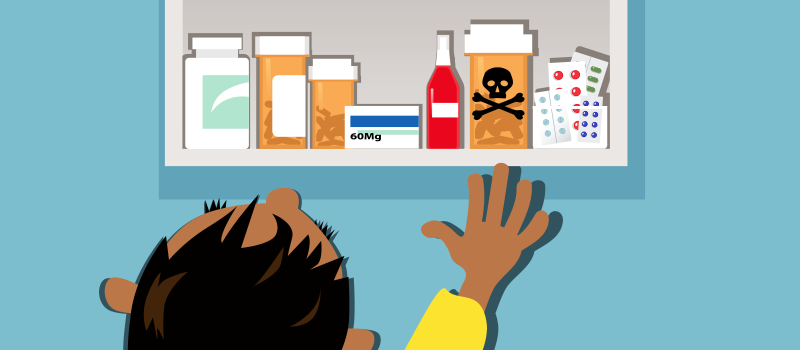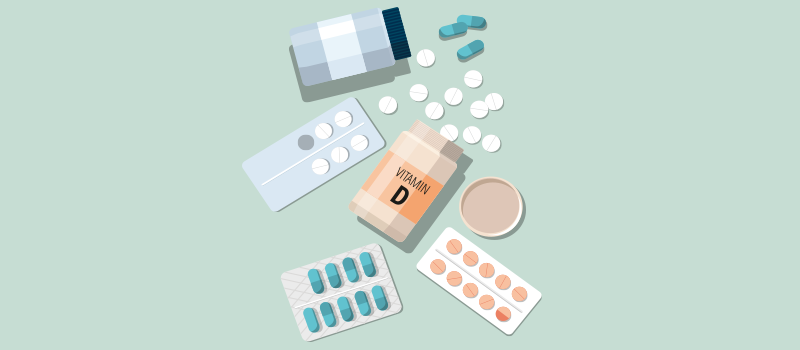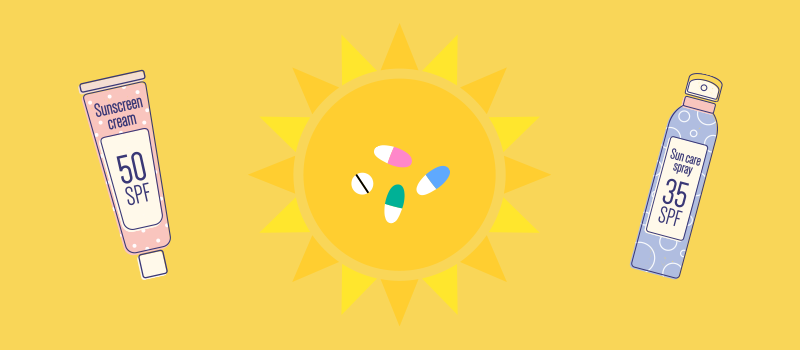What’s the Buzz
The Bee Healthy Blog
What is Furosemide Used For?

Key highlights for furosemide oral tablets
- Furosemide oral tablets are approved to treat hypertension (high blood pressure) and fluid retention caused by kidney disease, heart failure, and liver disease.
- By removing fluid buildup from the body, furosemide can make you feel dizzy and lightheaded when rising from sitting or lying down. You should get up slowly to avoid falls.
- Sun sensitivity is one of the notable side effects of this medication. Make sure you are hydrated and wear protective clothing to protect your skin.
- Drinking alcohol can worsen some of the side effects of furosemide. If you drink alcohol, ask your doctor or pharmacist how much alcohol you can safely consume.
Furosemide oral tablets facts
Even though furosemide is available under different dosage forms, this article will focus on the uses, side effects, and valuable tips for furosemide oral tablets only. If you are using other forms of furosemide, you should discuss the uses and adverse effects of the specific furosemide product you’re using with a doctor or pharmacist.
What are furosemide oral tablets?
Furosemide oral tablets are one of the older prescription drugs used to treat edema (fluid retention). Furosemide, the generic drug of the brand name drug Lasix, belongs to a group of medications called diuretics. The generic drugs of furosemide oral tablets are typically more affordable than the brand name products.
Furosemide dosage forms
Besides furosemide oral tablets, this water pill is also available as an oral liquid and injectable solution for intravenous (into the vein), intramuscular (into a muscle), and subcutaneous (under the skin) injections.
- Furosemide tablet: 20 mg, 40 mg, 80 mg
- Oral solution: 10 mg/mL, 8 mg/mL
- Injectable solution for intravenous injection: 10 mg/mL
What are furosemide oral tablets used for?
Furosemide oral tablets are a prescription drug that works to reduce edema (swelling or fluid retention). A healthcare professional can choose furosemide oral tablets to treat the following health conditions:
- Hypertension or high blood pressure — Various health conditions can cause fluid retention, leading to high blood pressure; furosemide can treat high blood pressure in adults only by removing the fluid buildup. To manage your blood pressure, your doctor may prescribe furosemide oral tablets alone or in combination with other blood pressure medications.
- Edema (swelling) — In addition to high blood pressure, fluid retention can be the result of other health conditions or medication side effects. A licensed healthcare professional can choose furosemide oral tablets, or furosemide in general, to treat edema caused by the following health conditions in adults and children:
- Congestive heart failure
- Liver disease, liver cirrhosis
- Kidney disease, renal failure
How does furosemide work?
Furosemide belongs to a group of medications called diuretics or water pills. More specifically, these water pills are classified as loop diuretics because they affect a specific part of the kidney called the loop of Henle.
Furosemide works to inhibit the reabsorption of water, salt, and other electrolytes into the kidney. As a result, furosemide increases the amount of salt and water that are passed via urine.
This drug information on furosemide oral tablets is for educational purposes only and may not include all possible indications, adverse effects, drug interaction, and potential warnings.
Dosage of furosemide oral tablets
Below are the typical furosemide dose for oral tablets and oral liquid
Adults
- High blood pressure
- The typical initial dose is 80 mg per day, usually divided into 40 mg by mouth twice daily. Your doctor may then adjust your furosemide dose based on blood pressure response and tolerability of side effects.
- Your doctor may suggest a drug combination with other blood pressure medications if your blood pressure is still uncontrolled.
- Call your doctor immediately if you notice side effects of low blood pressure, such as dizziness and lightheadedness.
- When furosemide oral tablets are used with other anti-hypertensive medications, blood pressure must be monitored carefully, especially at the beginning of therapy. In some cases, the doctor may reduce the dosage of other blood pressure medications by at least 50% to prevent a drastic drop in blood pressure when furosemide is added to the drug regimen.
- Your doctor may start you on a lower dose of furosemide if you are 65 years or older, as you are more prone to side effects such as dizziness or lightheadedness.
- Swelling
- The initial dose is 20 to 80 mg by mouth once.
- Your doctor may have you take the same dose or increase the dose by 20 or 40 mg 6 to 8 hours later until the swelling is resolved.
- The maintenance dose is one that provides desirable diuretic effects; it is taken once or twice daily (at 8 AM and 2 PM); this dose can be different from person to person. The maximum dose is 600 mg daily for severe cases of edema.
Children
- Swelling
- Your child’s doctor may determine the dose based on your child’s body weight.
- The usual dose is 2 mg/kg of body weight per day by mouth as a single dose.
- The doctor may adjust the dose based on the effectiveness of therapy and the tolerability of side effects.
- The maximum recommended dose is 6 mg/kg of body weight.
Useful tips on taking furosemide
What if I miss a dose?
If your doctor tells you to take a one-time dose of furosemide oral tablets, you don’t have to worry about missing a dose. Just make sure to take the medicine within the timeframe per your doctor’s instructions.
If you take this medication regularly and miss a dose of furosemide oral tablets, you should take the missed dose as soon as you remember. However, if it is almost time for your next dose, take only that dose and skip the missed dose. Do not take twice the amount to make up for the missed dose.
Should I be taking furosemide with food?
You can take furosemide oral tablets and oral liquid with or without food. However, if you experience nausea and vomiting, you can take this medicine with food to help with those side effects.
Can I crush or chew furosemide oral tablets?
If you or your child have trouble swallowing pills, furosemide oral tablets can be split or chewed. To avoid an unpleasant taste with chewing, furosemide oral tablets can be crushed and mixed with a small amount of water or apple sauce; this mixture should be consumed immediately after mixing.
You should tell your doctor if you have problems swallowing furosemide oral tablets. Furosemide is also available in an oral liquid form for ease of swallowing.
If you are using the oral liquid form of furosemide, you should use an oral syringe or measuring spoon to accurately measure the dosage.
What to watch out for when taking furosemide oral tablets with other medications?
Just like any medicine, furosemide can interact with other medications and vice versa. When drug interactions happen, they can affect the blood tests that evaluate blood levels of other drugs, which can lead to worsening side effects or cause other drugs to be less effective.
To prevent unwanted drug interactions, tell your doctor about other drugs you are currently taking, including other prescription medications, over-the-counter products, and herbal and dietary supplements.
Furosemide oral tablets can interact with many other drugs. Tell your doctor if you are currently taking the following medications:
- Nonsteroidal anti-inflammatory drugs (NSAIDs) such as ibuprofen (Advil, Motrin), naproxen (Aleve), aspirin, celecoxib, and diclofenac
- Other diuretics or water pills such as ethacrynic acid
- Phenytoin, a seizure medicine
- Antibiotics such as vancomycin, neomycin, gentamicin, and tobramycin
- Methotrexate, a drug for cancer and autoimmune disorders such as lupus and rheumatoid arthritis
- Lithium, a medicine for mental health
- Digoxin, a heart medicine
- Blood pressure medicine such as angiotensin converting enzyme inhibitors (ACE inhibitors), including lisinopril, captopril, enalapril, and benazepril
- Cyclosporine, an immunosuppressant
There are other drugs that may interact with furosemide oral tablets. You should talk to your doctor or pharmacist about other interactions that may occur while being on furosemide therapy.
Important warning for furosemide oral tablets
You should not take furosemide oral tablets if you have an unusual or allergic reaction to furosemide. Also, tell your doctor if you have a condition called anuria, where your kidneys don’t produce urine.
Furosemide may harm your unborn baby, and it may also pass into breast milk. Inform your doctor if you are pregnant or breastfeeding.
Tell your doctor if you drink alcohol.
Furosemide oral tablets may not be safe for you if you have certain health problems that put you at higher risk for certain complications. To make sure furosemide is safe for you, tell your doctor if the following risk factors apply to you.
Allergic reaction to sulfa drugs
If you’ve had allergic reactions to sulfa drugs before, there is a chance that you may be developing an allergic reaction to furosemide as well.
Electrolyte imbalance
Furosemide is used to treat swelling by removing fluid buildup in the body. However, too much fluid loss can lead to dehydration, presenting with a low blood volume and electrolyte imbalance. Certain risk factors, such as poor oral intake and kidney impairment, will put you at an even higher risk of dehydration and electrolyte change. Your doctor will monitor how you’re doing with furosemide through lab and medical tests such as kidney function and blood electrolyte levels.
Risk for people with liver disease
If you have liver disease or cirrhosis, you are at a high risk of developing a serious electrolyte imbalance. A healthcare professional may initiate furosemide while you’re admitted to the hospital for stringent monitoring. Tell your doctor if you have liver problems to make sure furosemide is safe for you.
Tinnitus (hearing problems)
Furosemide can cause tinnitus or hearing problems. High doses of furosemide oral tablets or taking other medicines with hearing problems as their side effects can further increase your risk of hearing problems or even hearing loss. Read the prescription label and follow your doctor’s instructions to take furosemide exactly as prescribed. Call your doctor immediately if you experience any unusual or new hearing problems.
Urination difficulty
Furosemide exerts its effects on your kidney to produce more urine. If you have problems emptying your bladder, you are at higher risk for infections and kidney disease due to the excess urine clogging up in the bladder.
What are the side effects of furosemide oral tablets?
Serious side effects
Call your doctor if you experience the following side effects:
- Severe skin reaction: In rare cases, furosemide can cause a life-threatening complication called “drug reaction with eosinophilia and systemic symptoms” or DRESS. Call your doctor and seek emergency medical care if you develop a rash, fever, diarrhea, or shortness of breath.
- Severe allergic reaction: trouble breathing, swelling of the throat, face, or tongue, hives, nausea, and vomiting
- Severe dehydration and electrolyte problems: muscle pain and cramps, weakness, lethargy, racing heartbeat, drowsiness, inability to make urine
- High blood sugar: dry mouth, increased thirst, and urination
Common side effects
- Drug-related orthostatic hypotension: furosemide oral tablets can cause low blood pressure when rising from a sitting or lying position leading to dizziness and lightheadedness.
- Headache
- Sun sensitivity: this medication can make you more sensitive to the sun leading to severe sunburn.
- Constipation or diarrhea
- Nausea, vomiting
Overdosage
Overdose symptoms include low blood pressure, low blood volume, and severe electrolyte imbalance.
If you think you’ve taken more than the usual dose, call your doctor or local poison control center. Get emergency medical help at the nearest emergency department if the symptoms are severe.
References:
- https://dailymed.nlm.nih.gov/dailymed/lookup.cfm?setid=e3a5db0e-bf6c-4ea9-9133-c3f215c856d0#:~:text=Edema-,FUROSEMIDE%20TABLET%20is%20indicated%20in%20adults%20and%20pediatric%20patients%20for,greater%20diuretic%20potential%20is%20desired.
- https://dailymed.nlm.nih.gov/dailymed/drugInfo.cfm?setid=ea623e21-e9fd-4ef1-843b-82cbc05af5bf
- https://www.ncbi.nlm.nih.gov/pmc/articles/PMC5819310/












SOCIAL